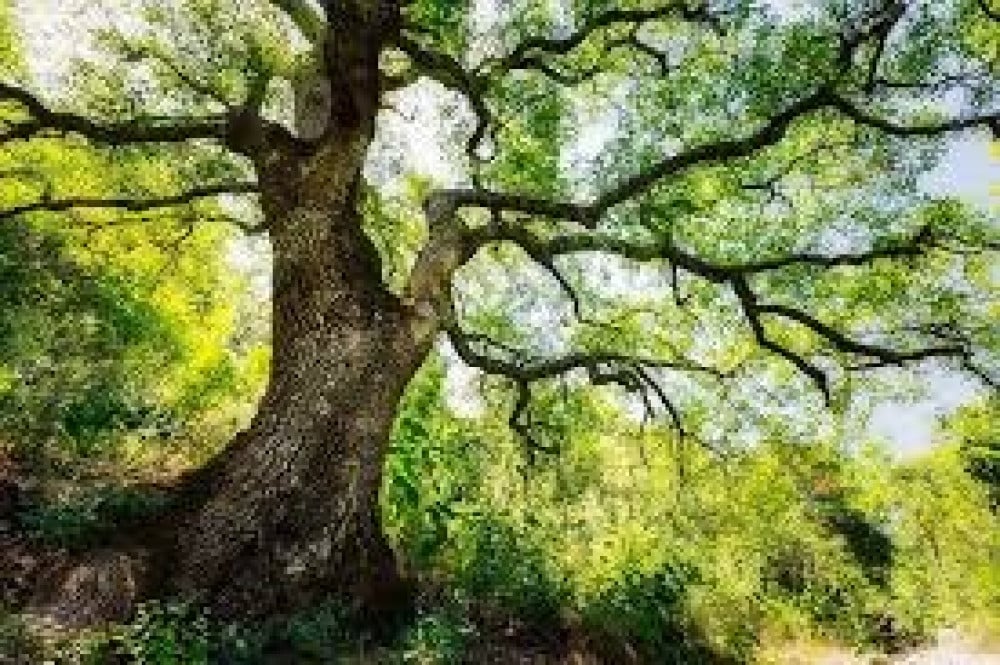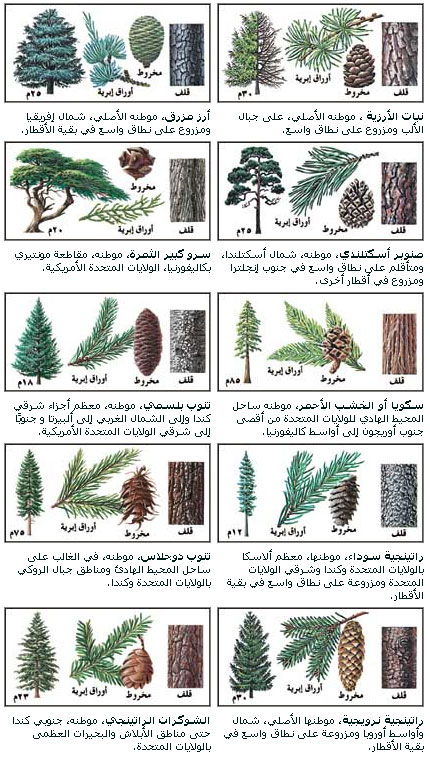Species include fir, pine, sequoia and spruce. Yew trees are also classified as needle-leaved trees. There are about 650 species of needle-leaved trees, most of which have narrow, blunt-tipped, needle-like leaves. But a few species, such as cedar and juniper, have narrow, scale-like leaves.
The vast majority of needle-leaved trees are evergreen, although they produce new leaves each year. The oldest leaves turn yellow or brown and fall off, while the newest leaves remain green and do not drop. A few species of trees with needle leaves are deciduous. One of these species is the larch plant that grows in the boreal forests. Another type of deciduous needle-leaved is the Mexican cypress.
Forest specialists call trees with needle leaves softwoods; Because most of them produce less durable and solid wood than those with broad leaves. But the woods of Douglas fir, yew, and some other needle-leaved trees are hard.
Trees with needle leaves belong to a plant group called gymnosperms. This group has no true flowers and its seeds are not enclosed in fruits. Most gymnosperm trees bear their seeds in cones made of hard scales, and the seeds are exposed on the surface of these scales. See: pine cone; gymnosperms.
Most conifers grow north of the equator. Most of them belong to four families: pine, cypress, yew, and thymus (a type of ornamental tree similar to a cypress). The pine family is the largest of these species. It includes not only conifers, but also other species such as fir, tsuga, larch and spruce. Pine trees are a large genus within the coniferous family. The most well-known of the 200 species within this family is the red-barked Scots pine. The yew family includes some well-known ornamental trees of the English yew and Japanese yew species. And yew species do not produce cones, but bear cup-like herbaceous fruits. Many members of the cypress family bear scaly leaves, and they give off a sweet, spicy scent. The genus Typhodium includes many species, in addition to the largest species of trees, which are the giant sequoia trees that grow in western North America.
Two families of conifers, the Coniferous family and the Araucaria family, grow mostly south of the equator. The evergreen lanceolate trees are tall and have broader leaves than most needle-leaved trees. The Araucaria family includes the Chilean pine, and these strange-looking trees have snake-like branches and are covered with sharp, scaly leaves. It is sometimes called the Monkey Puzzle Tree; Because its sharp leaves make climbing difficult. Needle-leaved trees endemic to the Southern Hemisphere include the Korean pine species, which grows to a height nearly as high as the North American sequoia trees. Needle-leaved trees in the southern hemisphere rarely form vast forests. They are found as single trees or in small pockets among broadleaf trees.


